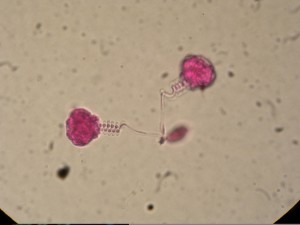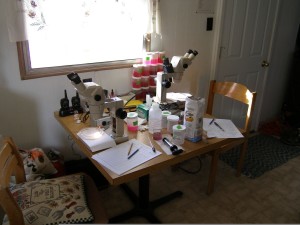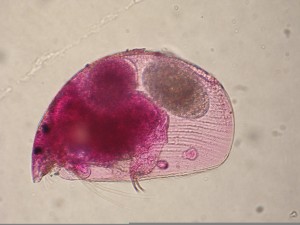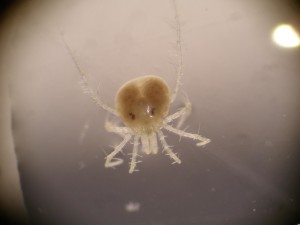My primary function while participating in the life history study of the Mohave Tui Chub was zooplankton counting. This was the first year of the field project, with several more years of study scheduled. During this phase of the project, we were developing a deeper understanding of the environment the chub lived in. We also did extensive water sampling and created micro habitats called mescosms. If you would like to read the dessertation paper Sujan Henkanaththegedara wrote about the Mohave Tui Chub, please see it here.

We collected zooplankton utilizing the horizontal water sampler which allowed us to get a representative sample at various depths across the waters were were testing. Once the water sample was collected, the invertebrates were strained out and placed in a sugar-formalin solution. Sugar formalin was chosen due to it’s similar osmostic characteristics to the saline environment they were taken out of.

The samples were than aliquoted out and a several mL sample was dumped in a zooplankton counting wheel. The wheel consists of a non-continuous circular line inset in a clear plastic dish. It is then placed under a dissecting scope and you start counting and classifying the zooplankton as you go around the wheel. We did this four times for each sample.

When we found an interesting or unknown specimen, we would take it over to a compound microscope on a glass slide. This allowed for much greater magnification so we could further classify the zooplankton.

For the study, we were not interested in classifying individuals down to the species, but instead got them all down to the family. Most of the samples contained many rotifers, and even on occasion we found some of the aquatic invertebrates such as water mites and chironomidae spp.


These photographs were taken through a compound microscope on a glass slide. I love using the Image-Based Key to the Zooplankton of North America, and recommend it’s use if you ever need to get down to the family of zooplankton you’re looking at. After that, a comprehensive key can be used to get to the species, but you’ll want to have several individuals for dissection, and a really good microscope.
